Cannabis
What Is Smoking Cannabis Clone Like?
Published
2 years agoon
By
admin
The global marijuana market was valued at a staggering “USD 10.60 Billion in 2018’. It is projected to get to USD 97.35 Billion by late 2026. With this ready market that threatens to break its breeches, growers are always on the lookout for better, faster, more effective ways of producing quality bud.
One such avenue is cloning cannabis plants. As futuristic as it may sound, this is actually a very simple concept. It normally involves cutting off a section of the “parent plant”, allowing it to develop roots and transplanting it. There are many advantages to cloning your cannabis plants, but the most significant one is that it is free!
What then are the uses of cannabis clones? Can cannabis clones be smoked? Is it safe? What are the effects?

Why Clone Cannabis Plants?
There are two main techniques one can use to reproduce cannabis: seeds and cloning.
Seed reproduction is sexual whereby pollination crosses the male and female cannabis plants resulting in new seeds, which can then be planted. When you buy quality cannabis seeds, each seed will comprise genetics from both the mother and the father plants. On germination, you will realize that your individual plants (phenotypes) will vary in both appearance and later on, in properties. This is because they are likely to express the genetics passed on by their parents in different manners. This difference is why you are not the exact replica of your siblings.
Cloning however is asexual and involves the cutting off of a part of the original plant, referred to as the “mother plant” and cultivating it into a whole new plant that is a replica of the original.
While naturally reproduced plants tend to have variations in phenotype and other characteristics, clones are a reproduction of the original plant to a tee. Cloning replicates features such as genetic profile, flavor, effects, grow time, yields, and cannabinoid profile of the mother plant.
Creating a clone ensures desired genes are passed on and you can continue enjoying your favorite pot for a long time, without variations.
What Is Smoking Clone Like?
By now you might be feeling like you have been transported into a scifi movie. Are clones viable? You might ask? Would smoking then cause mutations in you?
Slow down…
Clones are actually very stable and are an exact replica of the plant they were cloned from. And no, smoking clone will not cause you to grow an extra nose.
The experience and effects of smoking clone are exactly like what you would experience if you smoked the original bud. If the “mother bud” was luxurious, delicious, pungent and potent, that is the exact experience you will have smoking its clone.
RELATED: What Is It Like To Smoke THC-O Dominant Flower?
Most of the time, the end user doesn’t even get to know whether the quality bud they have purchased is from a germinated cannabis plant or is the yield of a cloned plant.
It is however notable that the experience of smoking a clone is likely to be a good one because a lot of time and care is taken in selecting only the best for reproduction. A poor variety is not very likely to be cloned. You should therefore be prepared to experience a top-notch cannabis experience if you smoke a clone.
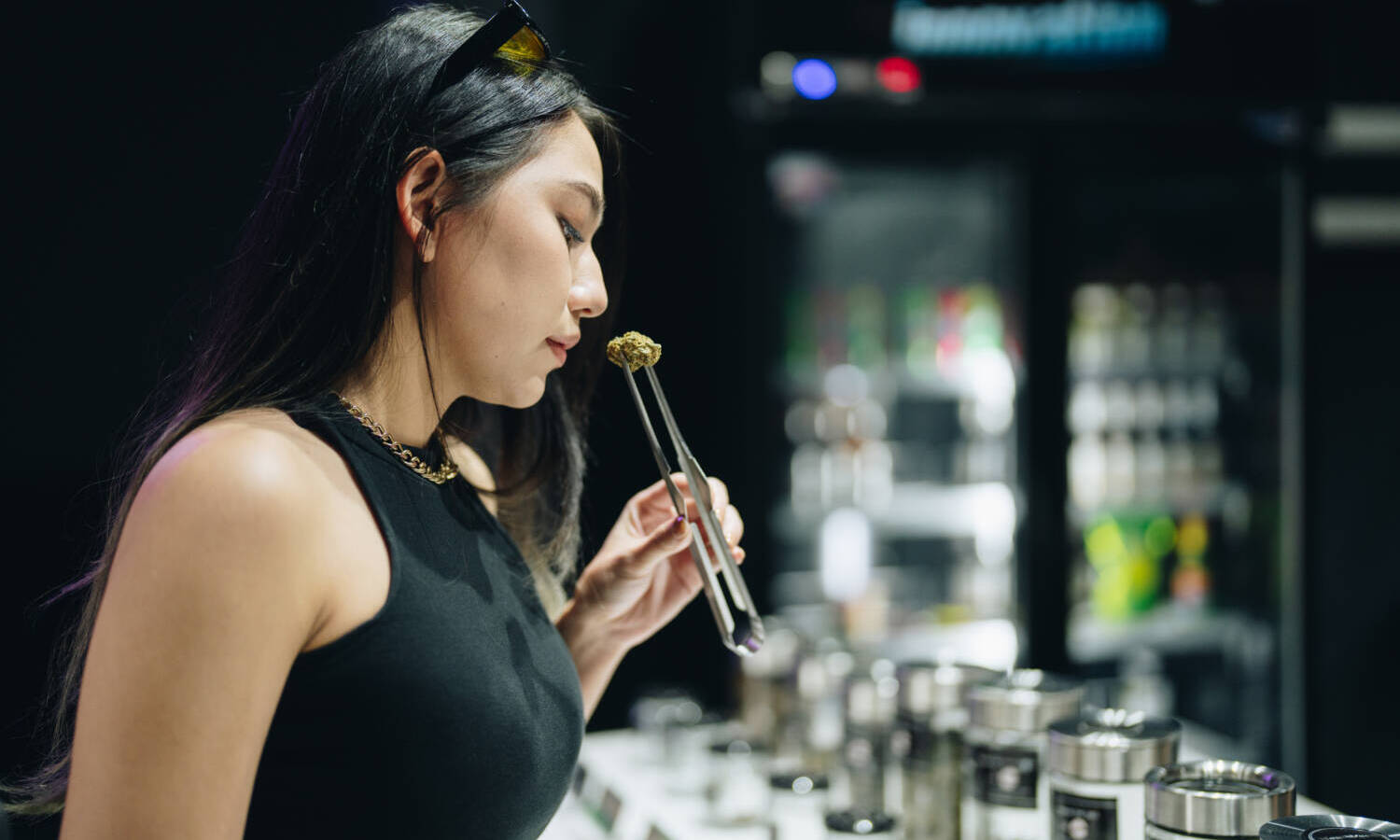
What is Clone Smoking?
As we have described above, smoking cloned buds is the same as smoking the bud of fertilized or feminized cannabis.
However, there are other circumstances under which you might find yourself in a position to smoke clone. This include clone that is discarded during:
- The clones of unsuccessful phenotypes discarded in the earlier stages in the plant cycle.
- The clones that are discarded at maturity, when they happen not to be the best in the “group”. Most times, it is sometimes important to wait until the plant has fully grown and the bud has matured before you can test the qualities of the different phenotypes to decide which ones to keep. When this happens, you are left over with cloned buds which can be used instead of being disposed of.
During the cloning process, several phenotypes are cultivated and monitored in order to pick the ones that are most prolific. To enable this process, each of the phenotypes is cloned at different stages to ensure that if it happens to be the winning star, it can be reproduced from either the vegetative or flowering stage.
RELATED: How To Determine The Best Phenotype Of A Weed Strain
At the end of “the race”, phenotypes that are not successful are “destroyed”, along with their clone. This can be the perfect opportunity to smoke the clone instead of letting it go to waste.
The clone that reaches full maturity is off course smoked like any other weed. However, the clone that does not reach maturity and is either written of at the vegetative or flowering phase can still be used in this manner:
- Cloned Cannabis plant stems: Though smoking them might be a waste of time and may induce a bout of coughing like you have not experienced in a while, you can use the leaves to make cannabutter, cannabis topicals and cannabis tea. It is important to note that you will require massive quantities to be able to make an effective impact.
- Cannabis cloned leaves. You would have to smoke the sugar leaves or fan leaves of the clone for you to get any effect. The sugar leaves are situated right next to the buds and often have a fine white coating. The fan leaves are bigger and situated further away but they too have significantly less, but adequate amounts of THC. You could also make hash and edibles using these leaves.
- Immature bud. Cannabis clones that have been “discarded” before maturity can still be harvested for the immature bud, It turns out it is quite the treat. Though they might not be as potent, they will still give you a good high.
- Roots. While smoking cloned cannabis roots might not get you anywhere, it happens juicing them might actually have a host full of benefits for you. They could apparently be a strong medicine for inflammation, to provide liver support, reduce pregnancy difficulties, boost brain health, and some people even claim that it kills cancer cells. So don’t smoke the root…juice it!
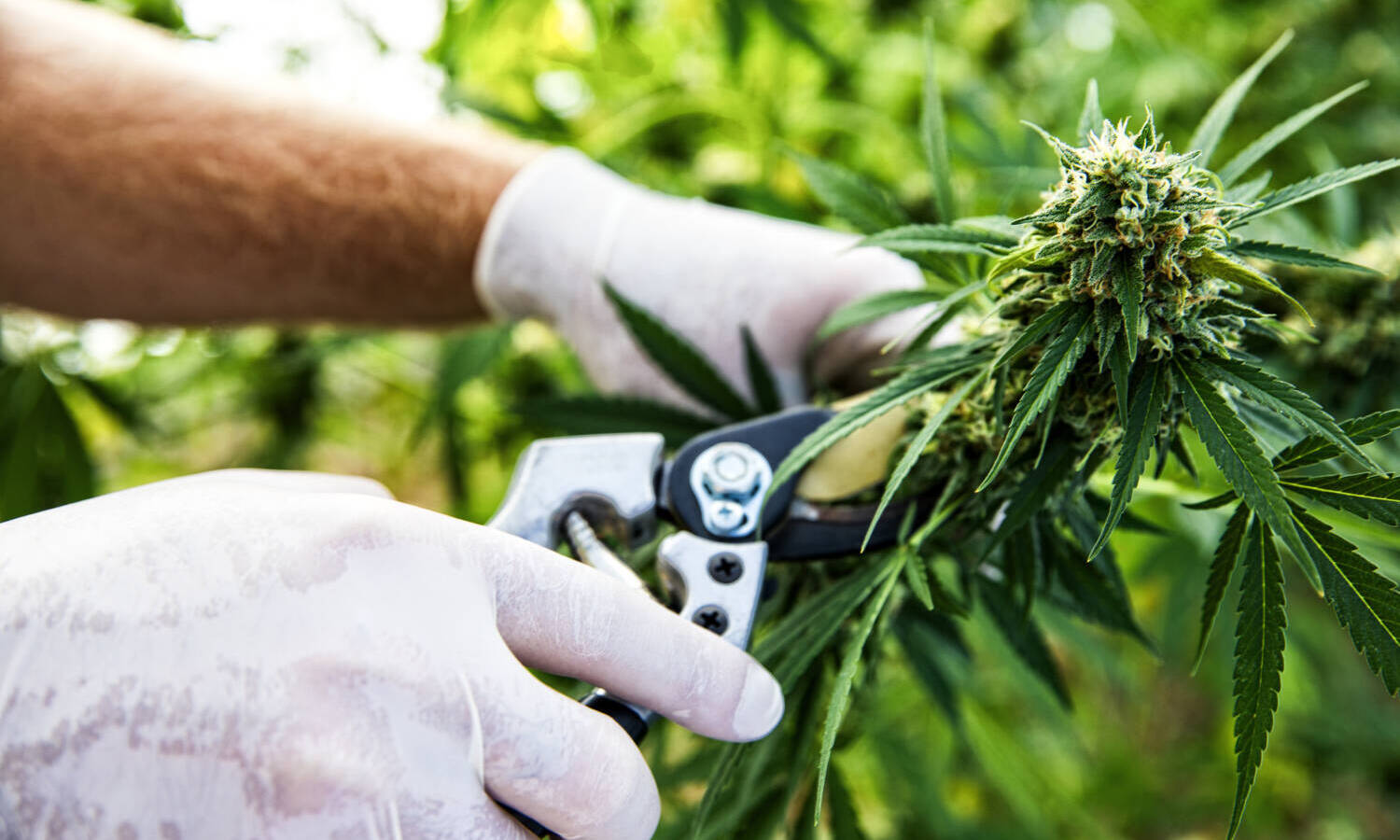
Choosing the Right Mother Plant to Clone From
As we mentioned earlier, cloning is basically about retaining and duplicating the best attributes of a strain. This requires that you are very selective about which phenotype to clone from.
Some characteristics you might look out for when selecting the cannabis plant to clone are:
- Pungent or Exotic or aromas
- Smooth, sweet, and bold flavors
- High resin production, and powerful potency
- Manageable heights (in case you are growing indoors), and robust growth
- Fast flowering time
- Resistance to pests, pathogens, and molds
- Large yields
What Are the Benefits of Cloning Cannabis Plants?
As cloning is rather quickly overtaking use of seeds, even feminized ones, let’s look at some reasons why growers might choose this method of reproduction:
Consistent growing – As we have explained in above sections, cloning the cannabis plants allows for the maintenance of the desired genetics in properties such as yield, growth rate, potency, flavor, taste, appearance, and so on.
Cost friendly – This is mostly because you do not have to purchase fresh seeds and in fact use the plants you already have. Also, many of the cloning techniques are actually very simple and inexpensive.
Convenient – Not only is it easy to learn the cloning process, it is also relatively not hard to implement. It is a straightforward process that can be learnt by even the most inexperienced of growers.
Speed – Depending on the stage the cut was taken off the mother plant, cloned cannabis plant can have a relatively fast turnover time.
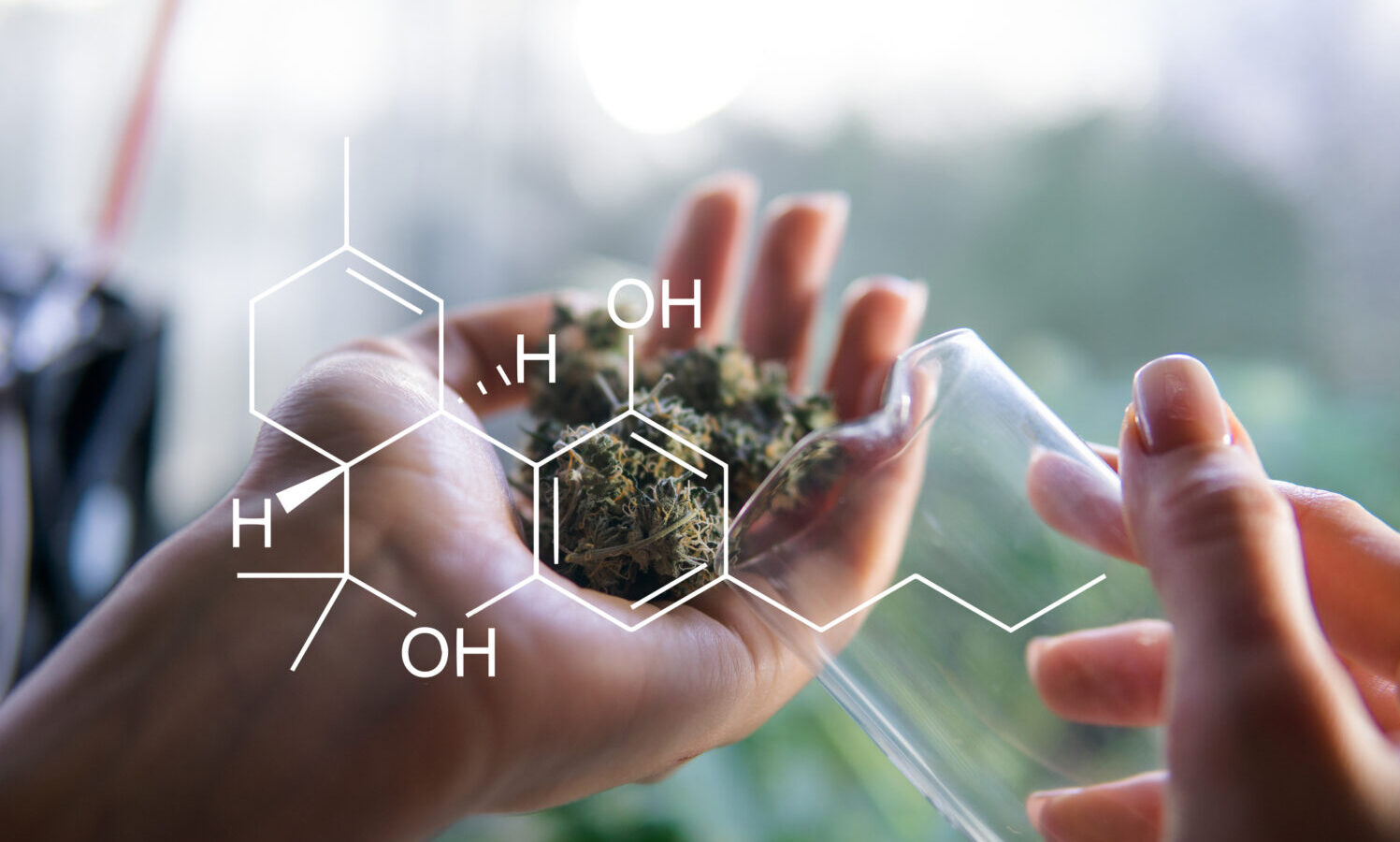
Is Clonal Degradation a Myth?
Now that we know so much about cloned cannabis and the effects of smoking it, let’s find out whether the basic considerations of maintained genetics hold over generations.
Clonal degradation or what some people would call genetic drifting is a concept that is contested fiercely throughout the cannabis world.
While some argue that it is a myth, others insist that it is a real phenomenon.
Cannabis chat rooms are filled with arguments on the process of clonal decay with some pointing a finger at mutation and others cellular degradation to a point the clone becomes “cloned out”. It probably doesn’t help that cloning of cannabis plants has not been around long enough to bear out the actual effects of thorough decay.
However, for the sake of argument and things to look out for, let’s revisit the basics of “high school bio”.
The basic concept is that cloned cuttings will not change their “genetic imprint” as the clone is an exact replica genetically of its mother plant. To illustrate this further, the cellular age of a clone is also exactly the same as that of the mother plant when it was excised. This is to mean, a two-week-old clone taken off a two-and-a-half mother, is in actuality two-and-a-half months old.
Typically, genetic variation stems from sexual reproduction, which is seeds containing different genetic material.
Now that we have established that genetic content does not change in the case of cloning, what exactly would bring about changes?
One theory is that genetic mutations can occur in the course of growth. These would be very slight changes that would only be evident after several generations.
Another theory is that cannabis clones subjected to different environments end up growing and looking different. An under-fertilized clone that finds itself in an environment with low humidity will definitely do worse than a similar clone getting perfect humidity and fertilization at a different location.
Environment without doubt plays a vital role in how the cloned cannabis plant grows and reproduces.
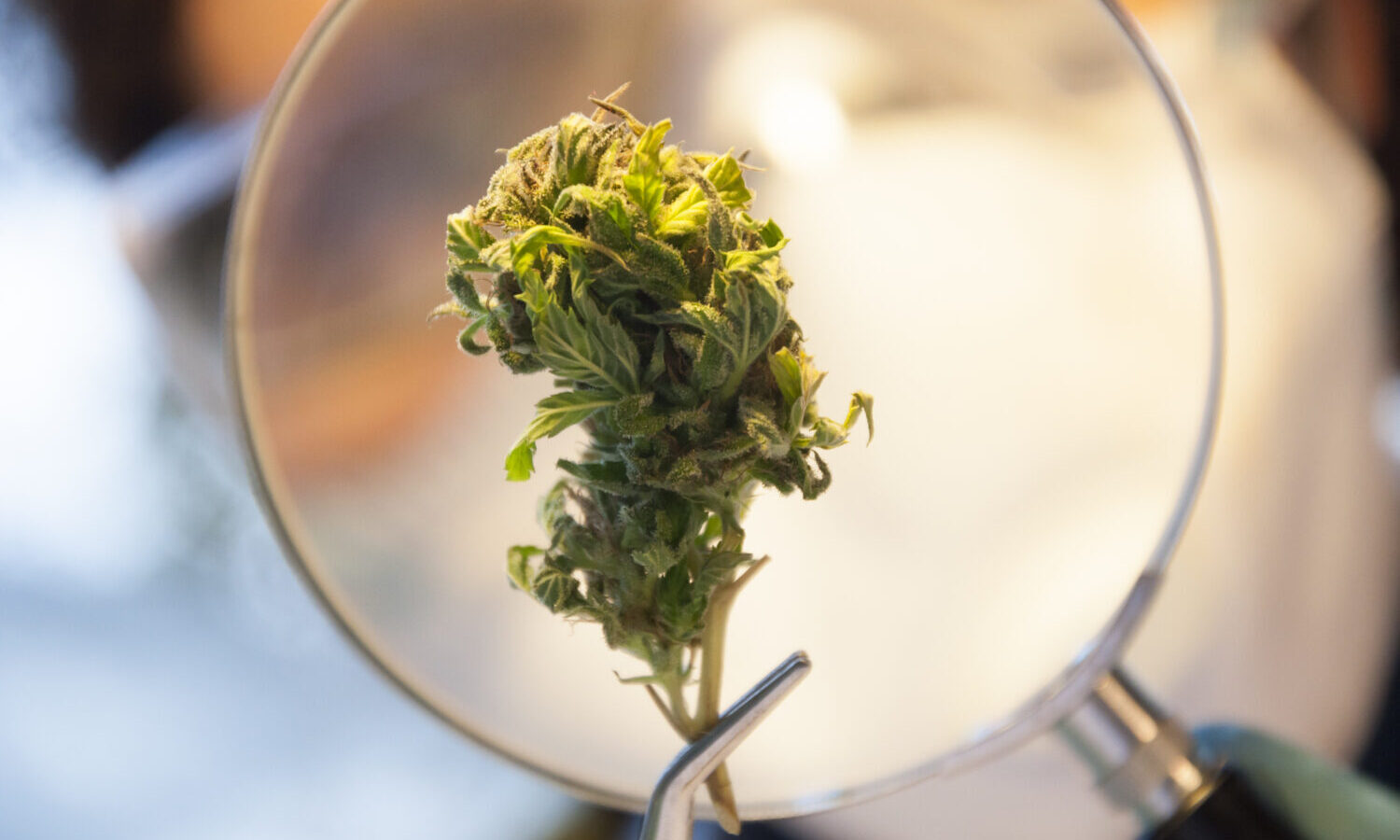
Let’s talk about how the environment affects epigenetics…
The area of epigenetics sheds some light in the understanding of how cannabis clones tend to lose down generations. Epigenetics refers to the outside modifications, or stimuli, that can cause genes to turn on or off. It’s not the genetic code of the clone alters, rather the environmental factors modify genetic potential as well as expression of the clone.
To quote Russell Pace III, the President of the Cannabis Horticultural Association, “Epigenetic impacts on clone health over time are very significant. Without proper mineral nutrition and biological health, the vigor of a clone will diminish over time as it continually is replicated, thus reducing its viability,” .
Genes apparently load the gun, but ultimately, the environment “pulls the trigger”.
Having learnt that successive generations of weed clones are not genetically inferior in any way like we thought, let us discuss the environments that can affect them and alter their original “dispositions”.
Environmental Stressors That Affect Clones
The below are factors that might affect subsequent generations of weed clones in a significant manner:
- Appropriate Humidity
- Maintenance of appropriate light levels- inconsistency with the light cycles in the vital vegetative as well as the flowering cycles
- Soil nutrients
- Water – Under watering or overfeeding
- Incorrect soil pH
- Pesticides can be another stressor that can damage plants when misapplied or applied overzealously.
- Taproots- Clones lack tap roots, and therefore grow less robustly generally
- Cleanliness is critical to clone success. Introduction of bacteria or fungi during the cutting and transfer stage causes infections that produce duds (slow growing plants with low produce).
- Genetic mutations could also occur in subsequent generations of clones. Though still under research, there is some evidence to show that sporadic mutations within the DNA sequencing could occur. Therefore, one should expect slight variations across generations.
Conclusion
The world of cannabis cultivation is ever expanding and without a doubt as more studies are conducted, more and more effective techniques of cloning cannabis plants will be developed, which is music to the ears of all cannabis lovers. As cloning takes root, so does the number of clones that are thrown out in the process of vetting.
We hope we have educated you in the different ways you can smoke your clone so that you do not experience the complete loss of throwing great stuff out with the trash.
Cannabis growers tend to take clones either from mother plants (which are kept constantly in veg) or young vegetative plants that they’ll later switch to flower.
This article originally appeared on MyCannabis.com and has been reposted with permission.
You may like
-


White House Finally Comments On Marijuana Industry
-


Stop Using Bat Poop to Fertilize Your Weed Plants Immediately, Here is Why…
-


The History Behind April Fool’s Day
-
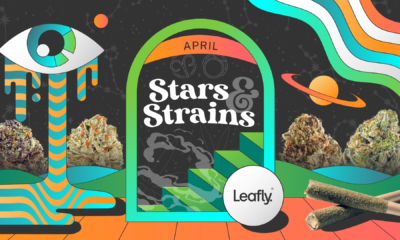

Star signs and cannabis strains: April 2025 horoscopes
-


Does Comfort Food Actually Help
-


Connect to cannabis history with three legacy strains from Paradise Seeds
Cannabis
White House Finally Comments On Marijuana Industry
Published
15 hours agoon
April 1, 2025By
admin
Part of the cannabis industry supported the new president, betting he was going to move and move quickly on cannabis – the White House finally commented.
The cannabis industry has been a boon for consumers, medical patients, veterans and legal states, but for the thousands of mom and pop businesses is has been a roller coaster. With a huge demand, it would seem to be easy money, but the federal, tax, and banking restrictions have made it difficult to grow and expand. Part of the industry were all for the new administration assuming they would support positive change, but many in the new cabinet and the House Speaker Mike Johnson are foes. Now the White House finally comments on marijuana industry…and it doesn’t show a clear path.
RELATED: Music Is A Turn On Like Sex And Marijuana
The administration’s current stance on marijuana reform is marked by inaction, despite campaign promises and earlier signals of support for cannabis-related reforms. A White House official recently confirmed that “no action is being considered at this time” regarding marijuana policy, leaving advocates and industry stakeholders uncertain about the administration’s priorities.

During his campaign, the resident expressed support for rescheduling marijuana under the Controlled Substances Act (CSA), which would move it from Schedule I to Schedule III, easing restrictions on medical use and enabling cannabis businesses to access banking and tax benefits. However, since taking office, no concrete steps have been taken to advance this initiative. A DEA hearing on rescheduling, initially planned for January 2025, was postponed due to procedural appeals and remains unscheduled.
The president has also voiced support for state autonomy in cannabis policy and endorsed state-level legalization initiatives, such as Florida’s failed 2024 ballot measure for recreational marijuana. While this reflects a more favorable stance compared to his first term, his administration has yet to prioritize federal reforms like the SAFE Banking Act, which would facilitate banking services for cannabis businesses. Efforts to include such measures in a government funding bill late last year were unsuccessful.
The delay in federal action has significant implications for the cannabis industry. Rescheduling marijuana could alleviate financial burdens by eliminating restrictions under IRS Code Section 280E and promoting medical research. However, the stalled process leaves businesses navigating regulatory uncertainties and limited financial access.
RELATED: The Science Behind Why Music Sounds So Much Better When You’re High
While stakeholders continue lobbying for reform, the administration appears focused on other priorities such as immigration and foreign policy. Advocates hope the President will leverage his influence to advance cannabis reform, but for now, the issue remains sidelined. Until then the industry struggles and waits.
Cannabis
This State’s Cannabis Revenue Keeps Pouring In
Published
2 days agoon
March 31, 2025By
admin
States are starting to scramble with looming budget deficients, but marijuana is a boon to some – especially one state.
The new federal administration is revamping how the government operates. With Doge, they are changing agencies and reducing services and support of states, which has left budget deficients in many. But some states have legal marijana and it has been a boon, for like alcohol…people are still consuming. States who are fully legal are making more money on weed than booze and this state’s cannabis revenue keeps pouring in. Missouri, the show me state, is being shown unexpected revenue.
RELATED: Mike Johnson And Marijuana
“Due to a strong cannabis market and effective, efficient regulation of that market,” Amy Moore, director of the Missouri Division of Cannabis Regulation, told The Independent this week, “the funds available for the ultimate beneficiaries of the cannabis regulatory program continue to outpace expectations.”
Funds will help veterans and other key projects. The other benefit is as seen in data from legal states, teen use is down so it frees up some other funds. Legal states are seeing benefits from legal cannabis including lower teen use and crime reduction.

States with legal cannabis are experiencing a significant boost in tax revenue, surpassing those generated by alcohol sales. This trend highlights the economic benefits of marijuana legalization, as cannabis markets expand and mature.
In California, cannabis excise taxes have consistently outperformed alcohol-related taxes, bringing in over double the revenue. Colorado has seen even more striking results, with marijuana tax revenues totaling seven times those of alcohol. Similarly, Massachusetts has collected more tax revenue from marijuana than alcohol since fiscal year 2021, marking a notable shift in state finances.
RELATED: Marijuana Use And Guy’s Member
Nationally, legal cannabis states generated nearly $3 billion in excise taxes on marijuana in 2021—20% more than alcohol taxes. By 2024, total adult-use cannabis tax revenue exceeded $20 billion, with states like Illinois and Washington reporting record-breaking contributions. Illinois alone collected $451.9 million from cannabis taxes in fiscal year 2022—one-and-a-half times the revenue from alcohol.
The funds are being put to good use. States like Illinois are channeling marijuana tax dollars into mental health services and community programs, while Colorado has invested nearly $500 million into public education. California has allocated millions to nonprofits addressing the impacts of the war on drugs.
This growing revenue stream underscores the potential of cannabis legalization to support vital public services and bolster state economies. As more states embrace regulated marijuana markets, the financial benefits are expected to continue flourishing.
Cannabis
Mixed Messages From The Feds About Cannabis
Published
5 days agoon
March 28, 2025By
admin
The federal administration is all over the board around fed cannabis policy…and millions of patients are worried.
The industry employees over 440,000 workers at all lives and is driven in a large part by mom and pop businesses. Millions use medical marijuana for health issues ranging from chronic pain to sleep. But there are mixed messages from the feds about cannabis, and people are very worried. The federal government’s stance on marijuana has become increasingly complex, as recent developments show conflicting approaches to the drug’s potential benefits and risks. On one hand, there’s a push for research into medical marijuana for veterans, while on the other, a campaign against cannabis use is being launched.
RELATED: Music Is A Turn On Like Sex And Marijuana
The juxtaposition of initiatives highlights the federal government’s inconsistent approach to marijuana policy. While some departments are exploring the potential benefits of cannabis, others are actively working to discourage its use. This dichotomy is further exemplified by ongoing legislative efforts. For instance, Rep. Brian Mast (R-FL) has reintroduced the Veterans Equal Access Act, which would allow VA doctors to recommend medical marijuana to patients in states where it’s legal. Meanwhile, documents from an ongoing lawsuit suggest that the DEA may have weighted the marijuana rescheduling process to ensure rejection of moving the drug from Schedule 1 to Schedule 3.

The Department of Defense (DOD) has allocated nearly $10 million in funding for research into the therapeutic potential of MDMA for active-duty military members. This initiative, driven by congressional efforts, aims to explore MDMA’s effectiveness in treating conditions such as post-traumatic stress disorder (PTSD) and traumatic brain injury (TBI). Rep. Morgan Luttrell (R-TX) expressed pride in this development, stating that it could be a “game-changer” for service members battling these combat-related injuries.
Additionally, a bipartisan effort in Congress has been pushing for VA research on medical marijuana for PTSD and other conditions affecting veterans. The VA Medicinal Cannabis Research Act, introduced in both the Senate and House, would mandate studies on how cannabis affects the use of addictive medications and impacts various health outcomes for veterans.
RELATED: The Science Behind Why Music Sounds So Much Better When You’re High
In stark contrast to these research initiatives, the Drug Enforcement Administration (DEA) has partnered with an anti-cannabis nonprofit to launch a social media campaign targeting young people. The campaign, set to run ahead of April 20 (4/20), aims to “flood” Instagram with anti-cannabis content. The DEA is offering monetary incentives to students for creating and posting anti-THC videos, with payments ranging from $25 to $50 depending on the type of content produced.
This approach has raised eyebrows, as it seems to contradict the growing acceptance and legalization of marijuana across the United States. Critics argue that such campaigns may be out of touch with current societal trends and scientific understanding of cannabis.

White House Finally Comments On Marijuana Industry

Stop Using Bat Poop to Fertilize Your Weed Plants Immediately, Here is Why…

The History Behind April Fool’s Day

Star signs and cannabis strains: April 2025 horoscopes

Does Comfort Food Actually Help

Connect to cannabis history with three legacy strains from Paradise Seeds

This State’s Cannabis Revenue Keeps Pouring In

Major Bloom: Cultivating community, creativity, and cannabis in Worcester

How a Colorado operator stumbled onto ‘blueprint for laundering marijuana’

Northern Ireland: Man charged after £425,000 worth of cannabis seized

Distressed Cannabis Business Takeaways – Canna Law Blog™

United States: Alex Malyshev And Melinda Fellner Discuss The Intersection Of Tax And Cannabis In New Video Series – Part VI: Licensing (Video)

What you Need to Know

Drug Testing for Marijuana – The Joint Blog

NCIA Write About Their Equity Scholarship Program

It has been a wild news week – here’s how CBD and weed can help you relax

Cannabis, alcohol firm SNDL loses CA$372.4 million in 2022

A new April 20 cannabis contest includes a $40,000 purse

Your Go-To Source for Cannabis Logos and Designs

UArizona launches online cannabis compliance online course
Trending
-

 Cannabis News2 years ago
Cannabis News2 years agoDistressed Cannabis Business Takeaways – Canna Law Blog™
-

 One-Hit Wonders2 years ago
One-Hit Wonders2 years agoUnited States: Alex Malyshev And Melinda Fellner Discuss The Intersection Of Tax And Cannabis In New Video Series – Part VI: Licensing (Video)
-

 Cannabis 1012 years ago
Cannabis 1012 years agoWhat you Need to Know
-

 drug testing1 year ago
drug testing1 year agoDrug Testing for Marijuana – The Joint Blog
-

 Education2 years ago
Education2 years agoNCIA Write About Their Equity Scholarship Program
-

 Cannabis2 years ago
Cannabis2 years agoIt has been a wild news week – here’s how CBD and weed can help you relax
-

 Marijuana Business Daily2 years ago
Marijuana Business Daily2 years agoCannabis, alcohol firm SNDL loses CA$372.4 million in 2022
-

 California2 years ago
California2 years agoA new April 20 cannabis contest includes a $40,000 purse



